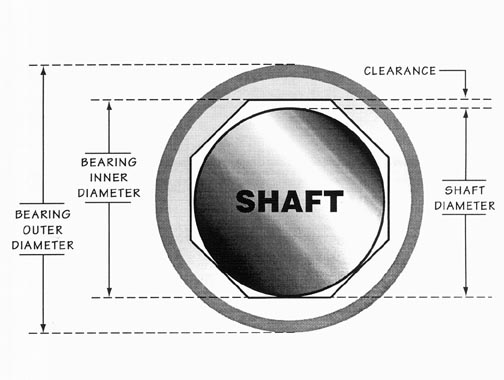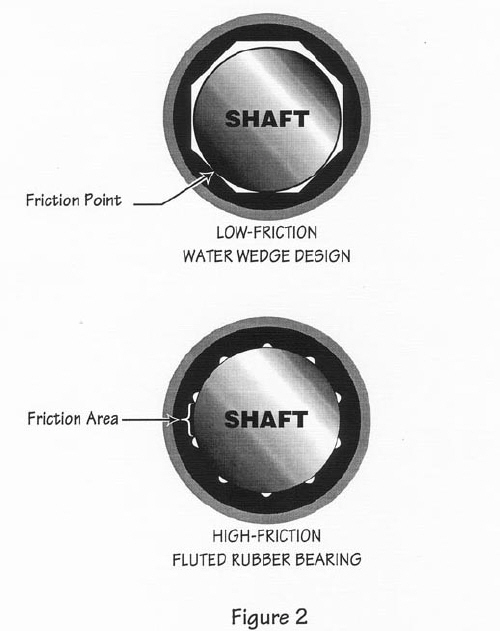Water Wedge Design
Water Wedge Design Advantage
In a properly operating bearing, a lubricating medium completely separates the shaft and the bearing surface; the load rides on the lubricating film. The water wedge design increases the efficiency of water lubrication (please see Figure 1).
With the water wedge style rubber bearing, the faces are designed to permit deformation under load without increased friction. The angle of approach between the shaft and the bearing face adjusts as the load changes, therefore keeping friction to a minimum.
Heat is a natural by-product of friction. Heat will cause thermal expansion, accelerated wear and failure of a bearing. The water wedge design keeps friction to a minimum by contacting the shaft only at tangent points.
Old-style, "fluted" bearings are ground to a diameter; thus creating a large surface contact area with the shaft (please see Figure 2). This large contact area, combined with the fact that any lubricating film is wiped off the shaft as it rotates, generates greater amounts of friction and heat than the water wedge style bearing.
Abrasives such as sand and grit are anticipated foreign matter in the bearing lubricant. These particles must be flushed away to prevent scoring of the shaft or clogging of the bearing. The Water Wedge design helps prevent this abrasive damage by providing a greater flow area than a fluted bearing design. The resilient rubber lining cushions any particles in the bearing, protecting the shaft from scoring until the particles are flushed away. As the shaft rotates, the continuous flow of water flushes the abrasive particles into the water wedge area and then discharges them from the bearing.
Palmer Products, Inc. is the only fluid-lubricated bearing manufacturer that exclusively uses the water wedge design in all of its Industrial Bearing
Figure 1

Figure 2
